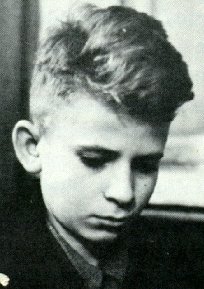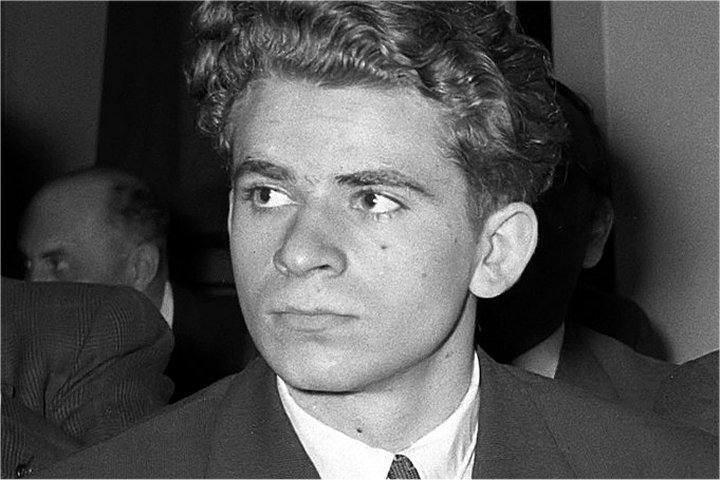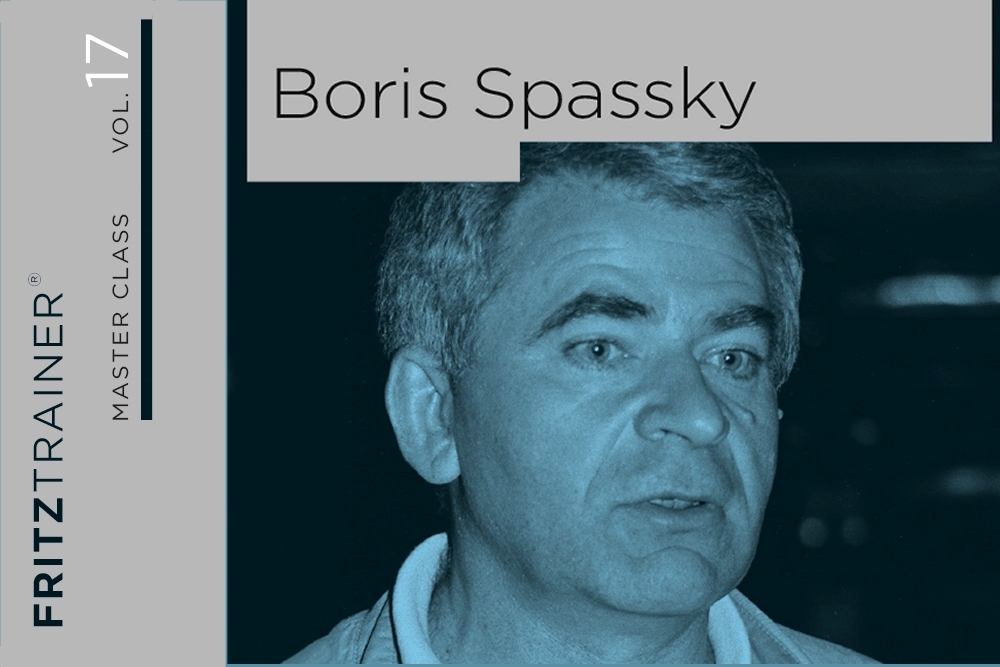Here, I want to offer a review of the ChessBase, Master Class Vol. 17 - Boris Spassky. Let me begin by recounting my experience with the 10th World Champion.
Often, we come to appreciate some great chess players much later than we should. Such was my case with Spassky, someone I discovered only late into my chess education.
I studied mainly classical chess of the Golden Age when I was an improving player, and Spassky was not even an afterthought. There were only the games of Lasker, Capablanca, and Alekhine to study. Besides, I thought, who would want to study the games of the man Bobby Fischer beat decisively?
Much later, however, I came to know that Spassky had a very universal style and peeked at his games. To my surprise, I found him to be as comprehensible as the great classical masters!

Boris Spassky 1948
To be sure, Spassky was a modern, universal player, but he shared many qualities with my classical heroes. Tal was too complicated for me, Petrosian too subtle, but Spassky was just right within my chess understanding. Much of his success came from his ability to blend strategy and tactics neatly. The fight in him and his games initially reminded me of Lasker.
As many would do after discovering a new player to like, I gathered as many resources as I could on Spassky. This included the ChessBase Master Class Vol. 17 – Boris Spassky, which became a valuable source material as I studied the games of the 10th World Champion.
This particular volume of the ChessBase series divides the material on Spassky into five major sections. These are a short biography, a survey into Spassky’s openings, samples of his strategic middlegames, then a selection of tactics and his best endgames. I have not surveyed all the volumes in this series, and I am unaware if they are all formatted this way. A presentation like this, however, is very effective as it allows a comprehensive study of a great player.
The short biography written by André Schulz provides a good summary of Spassky’s career. Aside from being the 10th World Champion, Spassky was a two-time Soviet champion, winning the titles in 1961 and 1973. He also tied for first in the 1956 and 1963 Soviet Championships. He was seven times a world championship candidate (1956, 1965, 1968, 1974, 1977, 1980 and 1985), winning in 1965 and 1968, and reaching the semi-finals in 1974 and 1977.

Boris Spassky | Foto: Herbert Behrens / Anefo; / CC BY-SA 3.0 NL
One information I have gathered from this biography, which I have not in longer ones, is that Spassky’s role model was Alexander Alekhine. This likely explains why I found him closely similar to the classical masters, and why his games have an overriding tactical feel.
On this DVD GMs Rogozenco, Marin, Müller, and IM Reeh present outstanding games, stunning combinations and exemplary endgames by Alekhine. And they invite you to improve your knowledge with the help of video lectures, annotated games and interactive tests
The openings section is presented by Dorian Rogozenco. Rogozenco explains that the opening was not the strongest part of Spassky’s game. He was not a theoretician or opening innovator, but he played the right ones that led to middlegames suiting his temperament and playing style.
As Spassky was a natural attacking player who evolved into a universal one, his opening repertoire was wide as well as aggressive. With White, he played both e4 and d4, showing marked preference for gambits, especially the King’s Gambit and the Anti-Moscow Gambit. With Black, he was more solid, employing the Ruy Lopez and Sicilian against e4. He played the Queen’s Gambit, the Nimzo-Indian, Queen’s Indian, and even the Bogo-Indian against d4. He also had an aggressive choice in the King’s Indian. This is a wide repertoire, indeed.
Spassky preferred to play openings and variations he understood very well over those that required deep analysis and long memorization. He popularized openings such as the King’s Gambit, the Sicilian Closed Variation, and the Nimzo-Indian Leningrad Variation. Rogozenco presents famous games Spassky played with these openings. These include a game for the ages against David Bronstein with the King’s Gambit, an intergenerational encounter with Nigel Short with the Nimzo-Indian Leningrad, and a Candidates’ battle with Efim Geller with the Closed Sicilian.
Those who wish to study Spassky thoroughly should analyze the games independently using a strong program and the free database provided in this volume. They are essential to understanding Spassky’s overall style. Those who, like Spassky, play positional and tactical chess equally well, may pattern their openings after his repertoire. They should, however, pair this volume with an up-to-date ChessBase opening product as most of the games follow mid-twentieth century theory.
The strategy section is presented by Mihail Marin. Of all the sections, I find this one the most conducive to study as Marin has a very professorial air.
The four strategic games Marin presents reveal a distinct pattern in Spassky's playing style. First, he would strive to gain an advantage out of the opening with fast and harmonious development. He would work to increase the edge, then seek a quick finish by attacking or sacrificing a piece. A pure positional player brings an advantage into the endgame, and wins by a tempo or drives the opponent into a zugzwang. Not Spassky. Not one given to playing an entire game slowly, he would maneuver splendidly, then cap off with tactical fireworks. In a sense he was like his model Alekhine, who played in similar fashion. Although Alekhine’s combinations and finishes are flashier, Spassky’s are just as deadly. Their games’ smooth flow from preparatory, positional play to a forceful, decisive end are just as impressive.
The most important lesson I learned in this section comes from Game 4 of the 1969 World Championship Match between Spassky and Petrosian. Here, Spassky demonstrated the technique of vacating pieces from their location so that other pieces could utilize a rank or file or occupy an all-important square. This, at least, has never been a theme or winning strategy in any of my serious games.
The tactics section is presented by Oliver Reeh. This is the part I enjoyed most, due largely to its interactive feature. Users are challenged to play as Spassky did, with the tasks’ degree of difficulty ranging from low to quite high to really beyond my level. Reeh presents twenty-four games, all with varying numbers of moves to find. In addition to these, there are twenty other games in PGN format that provide the same challenge. This section will enhance your tactical skills, improve your over-the-board calculation, not to say provide you with hours of enjoyment.

Boris Spassky | Foto: Dagobert Kohlmeyer
Every great player has his magnum opus, and for a long while I thought Spassky’s is his aforementioned King’s Gambit game against Bronstein. Through Reeh, I uncovered another fantastic game by Spassky, this time against the less prominent Gilles Andruet. Finding Spassky’s tactical shots that forced mate makes this game even more fascinating.
The section on endings by Karsten Müller wraps up the Spassky volume. Spassky was a strong endgame player himself, and this segment is quite the fitting final piece that justifies Spassky’s reputation as a universal player.
Müller presents fourteen Spassky endgames. Müller is a known endgames expert, and often he appears to breeze through the winning endgame techniques and principles Spassky employs in these games. This is fine for experienced players, but the improving ones must be quick to spot the bits of essential information in Müller’s presentations.
Users must take care to replay the games slowly, study the variations, and try other viable moves if they are to make the most of the material. This section, therefore, may have the most to offer, but also requires the most work.
Lastly, the volume comes with a bonus section made up of Spassky databases, Spassky books with White and Black, and extra lectures by Marin and Müller.
In all, this Master Class volume has excellent content and will make a valuable addition to one’s collection or shelf. I eagerly recommend it to anyone who wishes to study the 10th world Champion, or who seeks to improve their tactical and positional skills with Spassky as his model.
In this video course, experts including Dorian Rogozenco, Mihail Marin, Karsten Müller and Oliver Reeh, examine the games of Boris Spassky. Let them show you which openings Spassky chose to play, where his strength in middlegames were and much more.
More about Boris Spassky...


























